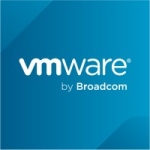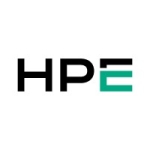We use it in junction with unified communication solutions. It provides great flexibility for our customers to expand the solution. Also, the ease of management is why they use HyperFlex.
We have some large customer managing some large hospitals in Denmark and it's very easy to make changes and expand with solutions around the hospitals. The management of the system can be done in a centralized way which has been a benefit for us.
Most of our users are Cisco customers, so it fits in within the suites we use. Primarily for me, as a solution architect, it's the technology and architecture that is the most valuable. I know from my technical colleagues that it's easy to use and for the customer, the uptime is the most valuable asset. It's running and has low failure which is why we use it.
We are moving further out with more cloud solutions, so we need HyperFlex to be more cloud-connected. They should develop more connection to Amazon Web Services and Google Cloud because our customers use their services and are moving in that direction.
We've had some downtime, but it's 99.5% stable. They can trust it. Hospitals are 24/7 driven, so we need to have a high uptime which is why we use HyperFlex.
It's a very scalable product because they have about 150 commercial services, so the scalability is very high, and the uptime is great.
We use technical support if we have any issues or trouble with it. Cisco is always awesome. It's very easy to work with a Cisco tech.
Our customers know its time to switch solutions because of the demands from their users to deliver faster and to be more prepared for meeting their customer's needs. They're using my company and myself as a solution provider and a trusted technical adviser, so we work very closely with our customers in the decision making.
Our customers definitely see ROI. Cisco is involved each time we do a business case, and the customers today are very cost sensitive so they're looking for return on investment. That's also why they use Cisco because they can either expand the products or they can trade the products back to Cisco and get credits and then buy new products.
We also considered IBM and Dell EMC. They go with Cisco because they're using Cisco in most of their environments so it's the easy choice. As long as Cisco provides the technology and the features that the customer needs, they don't have the need to look elsewhere.
I rated this solution an eight out of ten because there's still a little room for improvement.
I would advise someone considering this solution to connect with Cisco, use the resources that Cisco has. Be open, discuss with Cisco, discuss the architecture the customer designed, the customer demands, include Cisco all around, both the account managers, their technical solutions, the SEs, and so on. Use Cisco.

![Cisco HyperFlex HX-Series [EOL] Logo](https://images.peerspot.com/image/upload/c_scale,dpr_3.0,f_auto,q_100,w_80/0dra2w8zbx5vrvwmhkdswx9l90ys.jpg)







